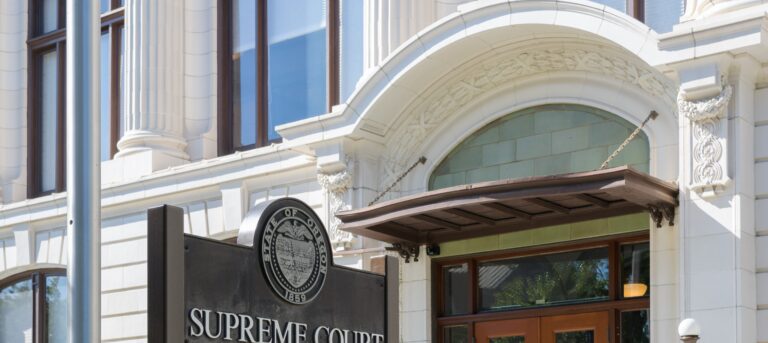Washington Case Law Update: Wrongful Death Claim Invalid After Survivorship Claim Against Same Defendants
Washington Case Law Update: Wrongful Death Claim Invalid After Survivorship Claim Against Same Defendants
From the desk of Kyle D. Riley: Washington’s wrongful death statute creates a cause of action for the beneficiaries of the deceased. Where the deceased initially brought a personal injury claim against the defendant, will the deceased’s beneficiaries and estate be barred from bringing a subsequent wrongful death claim against the defendant? Read on to find out.
Claims Pointer: Prior to her death, the decedent brought claims against the defendant for personal injuries related to asbestos exposure. The decedent died during trial and the case was amended to be a survivorship action. After her death, the personal representative of the decedent’s estate brought a wrongful death suit, naming the defendant who was named in the previous lawsuit and additional defendants who were not named in the initial lawsuit. The Washington Court of Appeals held that the wrongful death claims were barred against the defendant named in the decedent’s previous suit, but that the wrongful death claims were not barred against the other defendants.
Brandes v. Brand Insulations, Inc., et. al., No. 74554-9-I, Washington Court of Appeals Div. I (May 29, 2018) (unpublished).
After being diagnosed with mesothelioma, Barbara Brandes (“Barbara”) brought suit for personal injuries against Brand Insulations Inc. (“Brand”) and other defendants. In her complaint, Barbara alleged that Brand was negligent in selling and installing asbestos productions at a refinery where her husband had worked, resulting in her exposure to “take home” asbestos fibers. On the second day of trial, Barbara settled with all defendants except for Brand. Thirteen days into trial, Barbara died. The court allowed Barbara’s daughter, Ramona Brandes (“Ramona”) to be appointed as personal representative of Barbara’s estate and the trial continued as a survivorship action. The jury returned a verdict in favor of Barbara, and after offsetting the balance of settlement proceeds and granting Brand’s motion for a remittitur, the court awarded Barbara’s estate a net judgment of $927,431 against Brand.
One month after trial, Ramona, acting as personal representative of Barbara’s estate, brought a wrongful death suit on behalf of Barbara’s children, alleging loss of financial support, loss of parental relationship, and consortium. The complaint named Brand, as well as the following parties who were not named in Barbara’s previous lawsuit: CBS Corporation (“CBS”), Parsons Government Services, Inc. (“Parsons”), and Saberhagen Holdings, Inc. (“Saberhagen”). The defendants filed a motion to dismiss on the grounds that the judgment in Barbara’s previous suit against Brand extinguished the wrongful death claims. The trial court granted the motion to dismiss, and Barbara’s estate appealed. Saberhagen was dismissed from the suit for other reasons before this appeal was presented to the Washington Court of Appeals.
The Washington Court of Appeals began its review with a brief explanation on wrongful death claims. The court noted that the statute allows the representative to bring suit against persons who caused the death of the decedent. Specifically, the wrongful death statute creates a cause of action for the beneficiaries, and generally accrues at the time of decedent’s death as long as the deceased “had a subsisting cause of action at the time of death.” The court pointed out that since the inception of the wrongful death statute, Washington’s case law has limited the availability of claims when the deceased took action after injury but before death.
According to the court, one limitation on wrongful death claims is where the decedent, after suffering from injuries that later resulted in death, “pursued a course of conduct which makes it inequitable to recognize a cause of action for wrongful death.” (emphasis added). The court looked to case law that provided examples of inequitable conduct, which included “prior litigation, prior settlements, and the lapsing of the statute of limitations.” (emphasis added). The estate argued that Barbara had a subsisting cause of action against Brand at the time of her death because the claim had not been settled or released and the statute of limitations had not lapsed. The court agreed that Barbara had not settled or released her claim against Brand and the statute of limitations had not lapsed. However, the court pointed out that because Barbara had engaged in litigation against Brand after her injury, the equitable limitation should apply and bar the estate’s claim against Brand.
The court next considered whether the estate had viable wrongful death claims against CBS and Parsons. Barbara’s claims against CBS and Parsons were not barred by the statute of limitations, and Barbara had not settled, released, or previously engaged in litigation against CBS or Parsons. Because Barbara had a subsisting cause of action against CBS and Parsons, the estate was not barred from bringing wrongful death claims against CBS and Parsons. CBS and Parsons made several unsuccessful arguments to the court, one being that allowing the wrongful death claim creates a risk of “double recovery” and “inconsistent results.” The court disagreed and explained that the policy addressing the risk of double recovery is focused on protecting a “specific defendant that had already been sued.” (emphasis added).
NOTE: This opinion has not been published. It is provided to demonstrate how the court approaches the issues involved in the case. It cannot be cited as authority to a court of law.
View full opinion at: https://www.courts.wa.gov/opinions/pdf/745549.PDF
Case updates are intended to inform our clients and others about legal matters of current interest. They are not intended as legal advice. Readers should not act upon the information contained in this article without seeking professional counsel.
To email Kyle Riley, please click here.
To view the most recent Oregon Case Law Update: Oregon Supreme Court Grants Review in Two Important Cases – Tort Cap and Dram Shop, please click here.

















